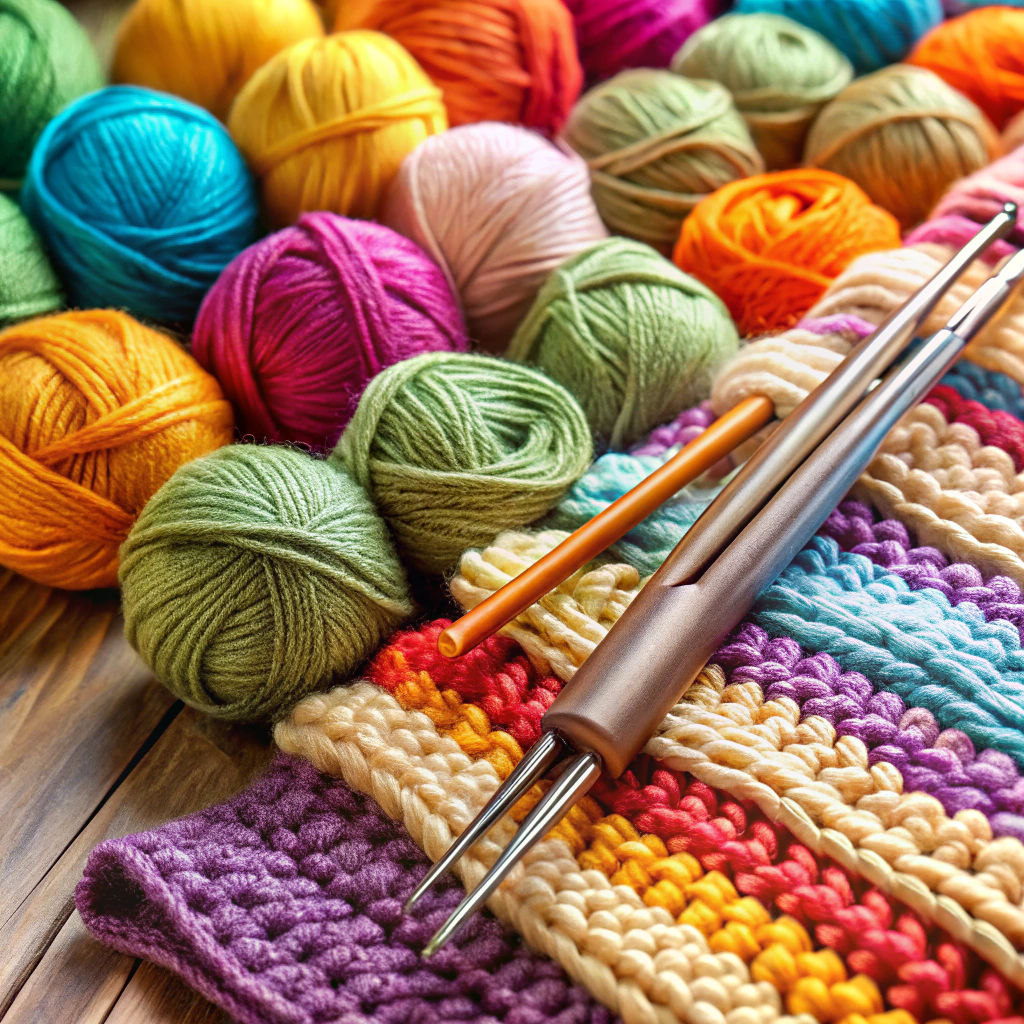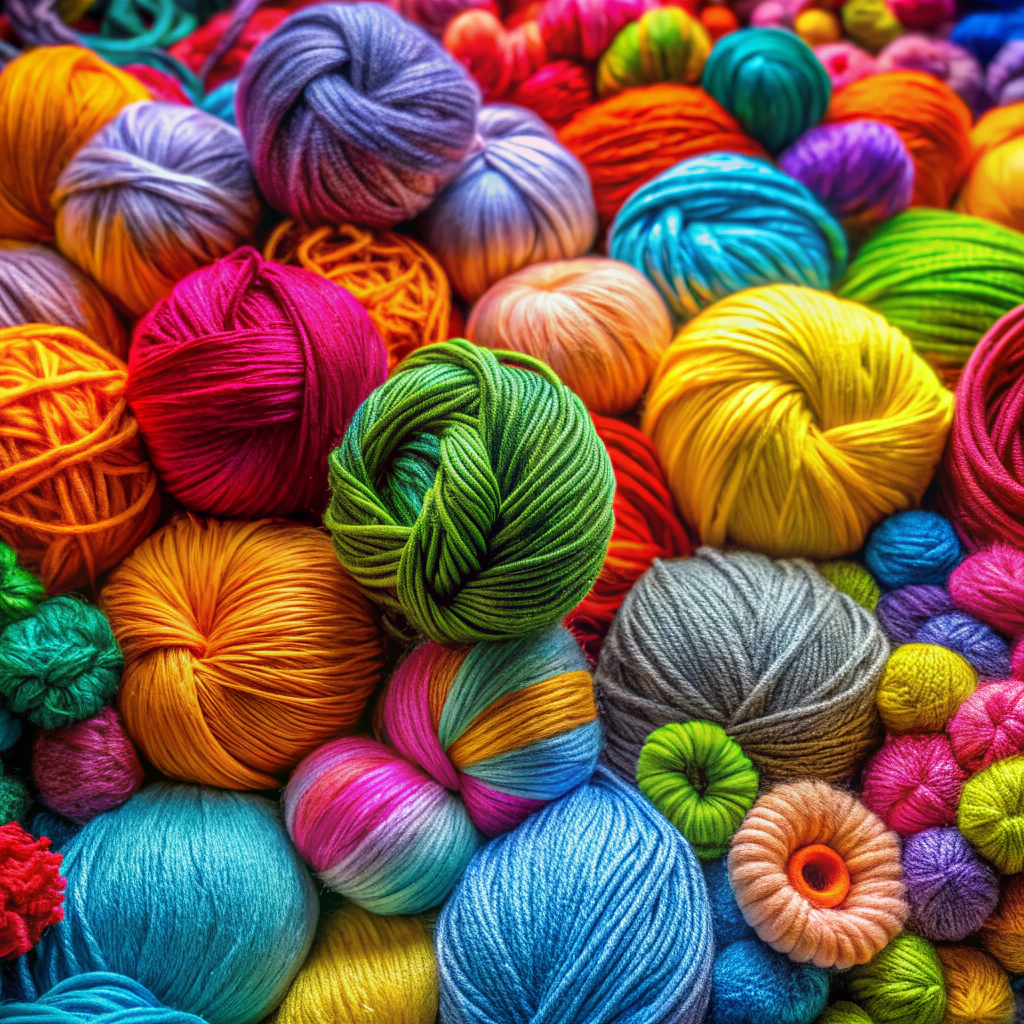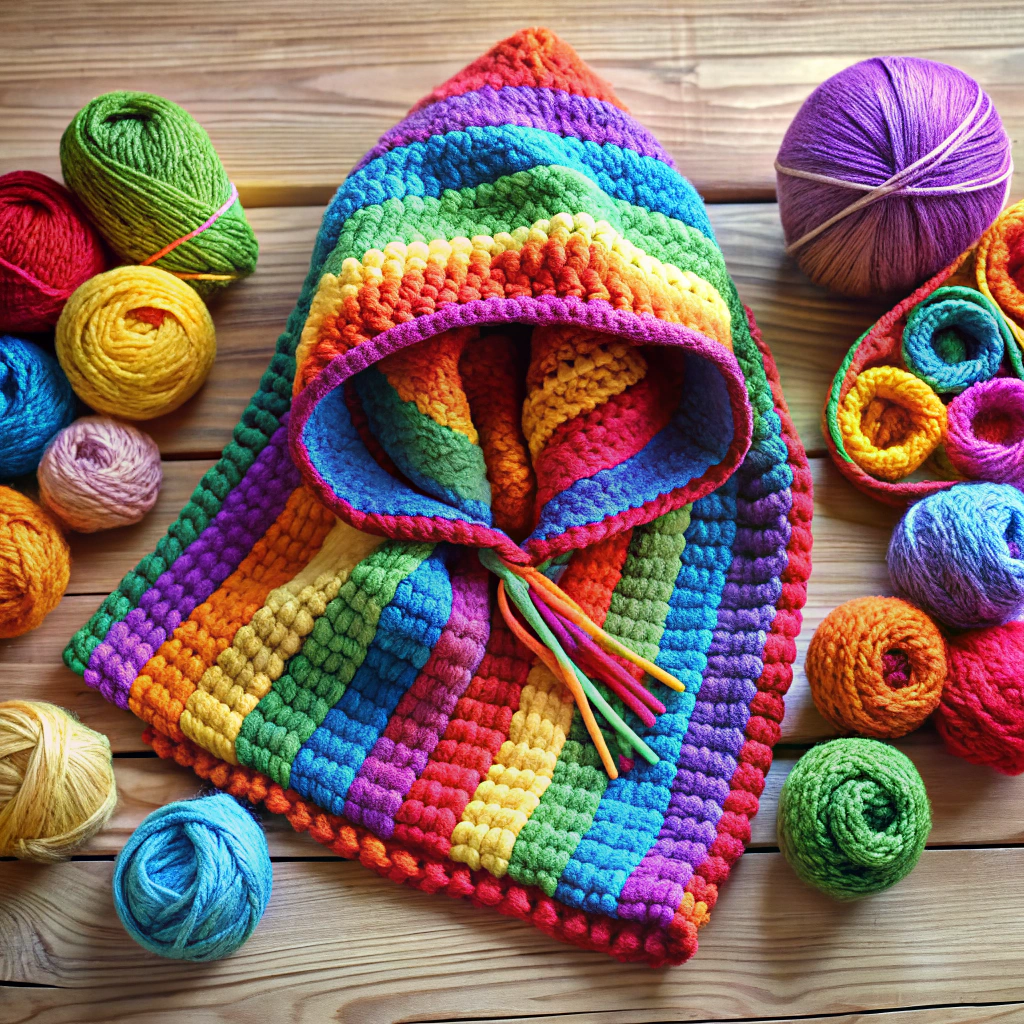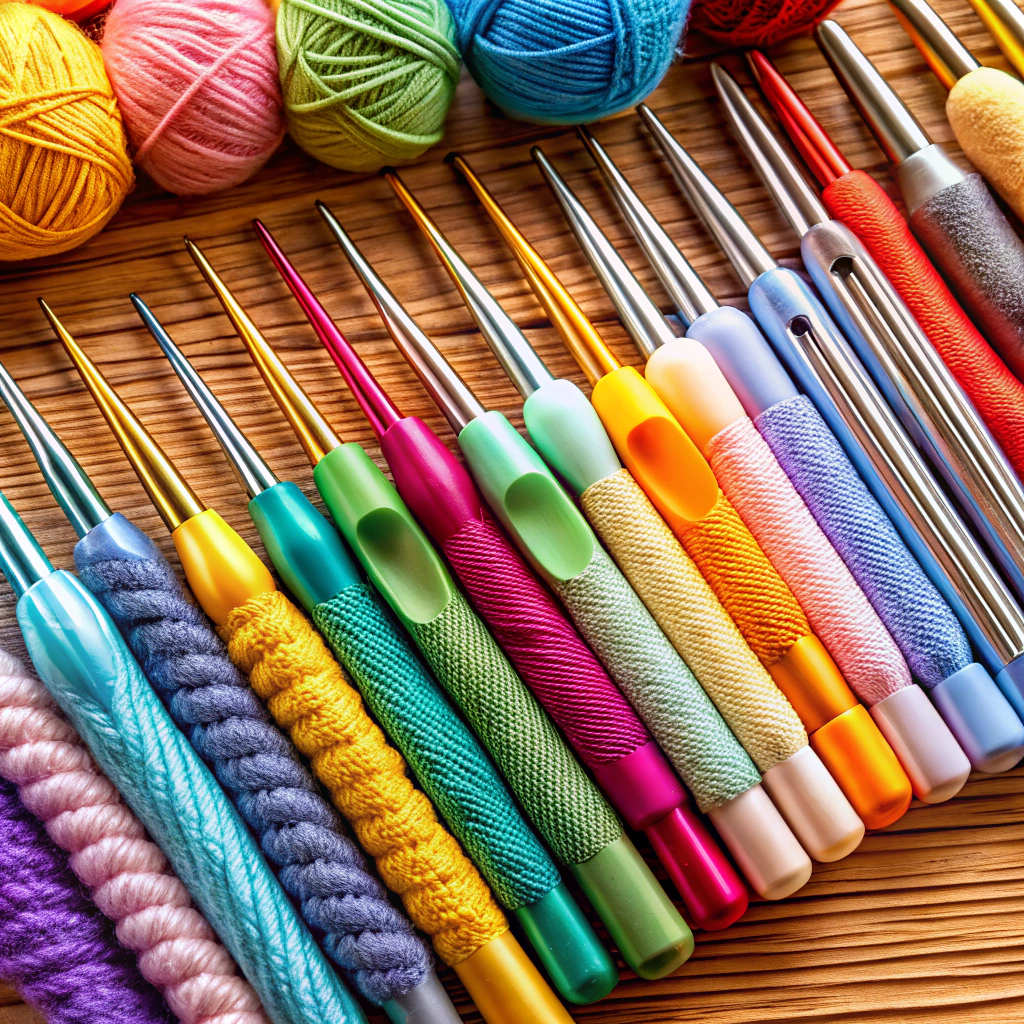You’ll discover the smallest crochet hook size and what it’s used for.
Ever tried crocheting with something that feels like a wand for fairies? That’s a crochet hook in its teensy-weensy glory! Curious about the smallest crochet hook sizes? From the wonders of micro crochet and lacework to the intriguing world of steel vs. non-steel hooks, we’ve got all the delicate details covered. Whether you’re threading the finest materials or just battling a bout of insomnia with your late-night crafting, you’ll find everything you need to know right here. Hold on to your stitches—tiny treasures await!
Key takeaways:
- Smallest crochet hooks are around 0.6 mm size.
- Use for intricate lace and delicate projects.
- Steel hooks offer better precision than non-steel.
- Ideal for fine threads, avoiding bulky yarns.
- Perfect for portability and easy storage solutions.
Definition and Measurement of Crochet Hook Sizes
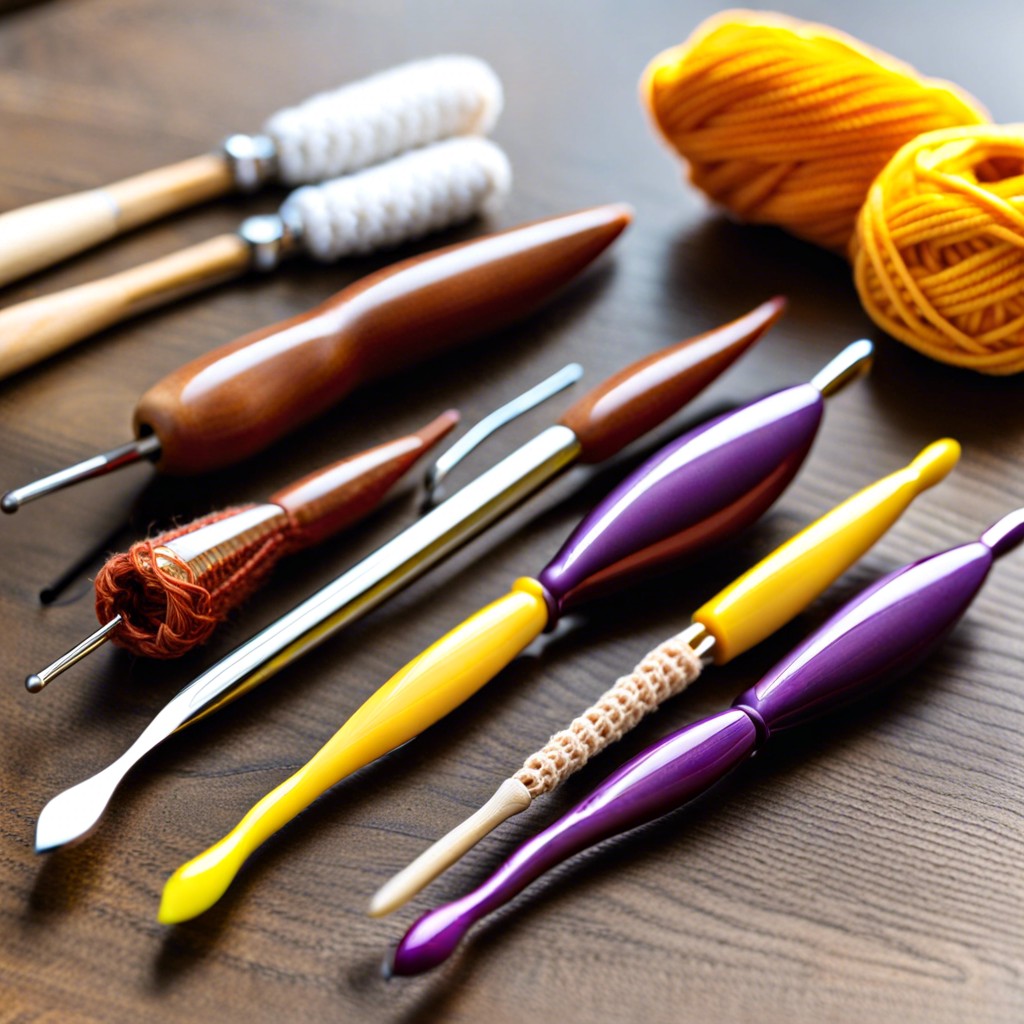
Crochet hook sizes can feel like deciphering a secret code without the fun decoder ring. In the crochet world, sizes bounce between letters, numbers, and millimeters—yep, all three—just to keep us on our toes. Here’s the lowdown to make it a little less head-scratchy.
Hooks are sized by the diameter of their shaft, which is the bit that determines the size of your stitches. This diameter helps to create the gauge, or the tension, in your project. The thinner the shaft, the smaller your stitches end up, which makes sense unless you’re having one of those days where logic takes a coffee break.
There are two main sizing systems: US and metric. US sizes scoot along with letters and numbers—think B-1, G-6, J-10. Here it’s all about millimeters, baby. A size B-1 is 2.25mm, and it goes up (or down, depending on how you look at it) from there.
For the size-savvy, a quick cheat: most patterns indicate the hook size needed. It might say something like a 2.25mm hook or a B hook. Some even double down for clarity, bless their cotton socks.
Understanding hook sizes can prevent you from accidentally crocheting a blanket for a mouse instead of a human. And it’s somehow both easier and harder than picking out paint swatches for the living room wall.
Smallest Standard Crochet Hook Sizes
Alright, let’s dive into crochet hook sizes that are so tiny they might make you squint! Here’s the skinny:
For standard crochet hooks, the smallest sizes are often designated with numbers or letters. Steel crochet hooks, typically used for fine thread work, go down to 0.6 mm. That’s thinner than some strands of hair. Legendary, right?
Non-steel hooks can be small too, but nothing beats a steel hook when you’re aiming for micro-level precision. Picture this: intricate lace doilies and delicate snowflakes that make you feel like a crochet wizard.
In the U.S., you might find hook sizes labeled with the word “Steel” followed by a number, like Steel-14, which roughly matches the 0.6 mm size. For those who appreciate metric measurements, it’s straightforward: just look for the millimeters.
So, grab your magnifying glass and prepare for the ultimate detailed adventure in crocheting!
Uses for the Smallest Crochet Hook Sizes
Got a stitchy itch that needs precision? Tiny crochet hooks are your new best friends for intricate work. Think lace doilies that would make your grandma jealous or delicate edgings on a baby garment that elicit all the “awws.”
Need to repair delicate fabric? A small crochet hook can weave magic where a sewing needle fears to tread. It’s like threading a needle, but with more pizzazz.
Ever wanted to crochet with sewing thread? Tiny hooks make it possible. Imagine creating minuscule flowers or detailed jewelry pieces that make people squint in awe.
They’re also excellent for beadwork. Small hooks help you seamlessly add beads to your crochet projects, making it look like you’re just casually performing wizardry.
For amigurumi aficionados, tiny hooks allow for tighter stitches and smaller creations. Perfect for keychain companions or pocket-sized critters that will steal your heart.
Lastly, don’t underestimate tiny hooks for fixing mistakes. Dropped stitch in knitting? Use one of these bad boys for a nimble rescue mission. It’s like having a superhero on standby in your craft kit.
Materials Suited for Tiny Hooks
When working with the tiniest crochet hooks, you want materials that match their delicate nature. Dive into the world of crochet threads, specifically size 10 or smaller. These threads are perfect since they glide smoothly through the minuscule hook’s eye.
Cotton thread is a popular choice, thanks to its smooth texture and durability. It holds up well even when worked into intricate patterns. Laceweight yarns can also be your best friend here, offering that ethereal, cobweb-like finish to delicate projects.
Always avoid bulky yarns with microscopic hooks. It’s a match made in crochet chaos. Attempting to stitch chunky yarn through a teeny hook is like trying to thread an elephant through a needle. Not advisable.
Silk threads are another luxurious option. They make intricate details stand out while giving your work a soft sheen. Just remember, the finer the material, the more delicate the final piece. So, channel your inner crochet elf and choose wisely for tiny hook magic.
Steel Vs Non-steel Tiny Hooks
Steel crochet hooks are the superheroes of the tiny hook world. They are strong, resilient, and precise—everything you need when working with delicate threads. Non-steel hooks, typically made from materials like aluminum or plastic, also have their perks, though they may lack some of the finesse steel provides in petite sizes.
Steel hooks are particularly popular for intricate work such as doilies and lace, where precision is paramount. Their smooth surface allows thread to glide effortlessly, making it easier to maintain even stitches. Bless those stitches!
Non-steel tiny hooks can be lighter and more comfortable for some hands, which means longer crocheting sessions without feeling like you’ve wrestled a bear. They might not be as durable, but they’re often easier to find and kinder on the wallet.
In summary, while steel hooks offer superior strength and durability, non-steel hooks provide a lighter, sometimes more affordable alternative. The choice largely depends on your project needs and personal comfort. Whether you’re crafting the tiniest lace or micro-amigurumi, there’s a hook out there just waiting to be your match!
Thread and Yarn Compatibility
Tiny crochet hooks, like the itsy-bitsy sizes, have a particular fondness for finer threads and yarns. Think of them as the delicate chefs whipping up gourmet miniatures. Here’s why and how:
To match those minuscule hooks, you’re looking at lace-weight yarns or threads. If it’s the size of dental floss, you’re in the right ballpark. Anything chunkier, and the hook might stage a protest.
Cotton threads, especially in sizes 10, 20, and 30, are a perfect pair. They glide effortlessly, playing nice with the tiny hooks. Wool? Not so much. Keep it thin and friendly.
The compatibility ensures your stitches stay neat and defined. No one wants a tangled mess when aiming for the dainty details, right?
Tiny hooks and fine threads also love working together to make intricate doilies, lace trims, or mini amigurumi. Think small and detailed, just like a crochet fairy tale.
So, pick the right partner for your tiny hook, and let the crochet magic unfold stitch by tiny stitch.
Adjusting Your Tension With Tiny Hooks
Picture this: you’re using a tiny hook, squinting at your work, feeling like a crafting detective on a miniature yarn mystery. Well, get comfy, because tension is about to become your new best friend or archenemy.
First up, relax those shoulders. Seriously, no one ever solved a mystery with their shoulders glued to their ears. Keeping your muscles relaxed will help you maintain even tension.
Next, loosen that death grip. Using a small hook often makes people clutch it like it’s their last lifeline. Trust your hook; it’s not going anywhere! Hold it gently and let it do its thing.
Think Goldilocks. Not too tight, not too loose—just right! Your stitches need room to breathe, especially with dainty hooks. Practice a few stitches and adjust until you’re comfortable.
Avoid the panic pull. When you feel your work tightening up like a nervous squirrel, take a break, shake out your hands, and start again.
Finally, practice, practice, practice. Like any great mystery, tension adjustment takes time to unravel. You’ll get the hang of it, and soon enough, you’ll be crafting like a pro.
Durability and Care for Tiny Crochet Hooks
Tiny crochet hooks might seem delicate, but with a bit of TLC, they’ll stick around for the long haul. Here are some pro-tips to keep those mini-hooks in prime condition:
First up, storage. When not in use, keep them in a protective case or pouch. These little guys love to play hide and seek, and misplacing them can feel like losing a needle in a haystack—literally.
Next, avoid dropping them. Seems obvious, right? But these hooks are masters of disguise and can disappear quicker than a cat at bath time.
Wipe them down after use. Finger oils and residue from yarn can sully your hook’s smooth surface. A quick wipe with a soft cloth keeps them clean and prevents corrosion, especially for steel hooks.
Keep them away from moisture. Steel hooks and water mix like oil and water, which is to say, badly. Humidity can lead to rust, and no one wants a rusty hook near their precious yarn.
Finally, treat them gently. These hooks are built for precision, not brute force. If you’re finding resistance while crocheting, it might be time to reassess your yarn choice rather than muscle through. Think finesse, not Hulk Smash.
Brands Offering the Smallest Crochet Hook Sizes
Looking to snag the tiniest crochet hooks out there? You’re in luck! Some brands specialize in offering crochet hooks small enough to make even a mouse-sized scarf.
Clover is renowned for its precision hooks. Their Amour Steel Crochet Hooks start from a minuscule size 0.6mm, perfect for those micro-crochet projects.
Tulip’s Etimo series is another top contender. With sizes beginning at 0.5mm, they blend comfort with functionality. Your fingers will thank you later.
Susan Bates also offers a selection of small steel hooks. Their “Steelite” line hits the tiny marks with sizes down to 0.6mm, well-suited for intricate lacework.
Addi might conjure images of knitting needles, but don’t overlook their crochet hooks. Addi’s sizes start as small as 0.5mm, and they offer ergonomic handles for those marathon crocheting sessions.
With these brands, you’ll never find yourself in a tight spot when it comes to delicate, detailed crochet work. Grab your most comfortable chair and prepare for microscopic mastery!
Benefits of Using the Smallest Crochet Hooks
Who knew you could derive so much joy from something so tiny? These Lilliputian hooks offer a plethora of perks that go beyond their small size.
Firstly, they are perfect for intricate detail. Think miniature doilies, lace edgings, and delicate snowflakes. If you’re a fan of detailed work that makes people say, “How on earth did you make that?”, these hooks are your new best friends.
Secondly, they encourage mindfulness and patience. Crocheting with a small hook requires slow, deliberate movements. Consider it therapeutic – almost like a calming, yarny yoga session.
Thirdly, portability is a breeze. These hooks can easily be slipped into your pocket, making them ideal for on-the-go crafting. Planes, trains, and automobiles – crochet wherever the wheels take you.
Lastly, they save on storage space. Unlike larger hooks that take up room, these petite tools can nestle happily in the smallest corners of your crochet kit. Your hooks will never have to fight over legroom.
So grab a magnifying glass and some thread. It’s time to explore the tiny yet mighty world of small crochet hooks.
